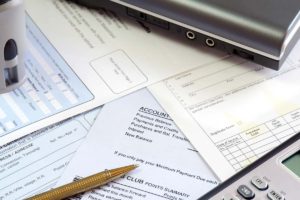As we attempt to keep up with the flurry of new laws created to help us get through the Coronavirus chaos, the subject matter of most interest is certainly the programs available to help businesses and their employees financially survive. There are many questions yet to be answered, of which information hopefully will be forthcoming soon, but we thought we’d brief you on what is in play so far. We’ve also attached for your review FAQS’s regarding the below programs.
Paycheck Protection Program Loans (“PPPL”)
- To assist in funding payroll cost, health care benefits, interest costs (including mortgages), rent and utilities.
- Businesses eligible for this loan program will include those with no more than 500 total employees (regardless of part-time or full time). Sole-proprietors, independent contractors, and other self-employed individuals, as well as certain non-profit entities, are eligible
- The covered loan period is retroactive to February 15, 2020, through June 30, 2020.
- The maximum loan amount is the lesser of 2.5 times the average monthly payroll costs for the one year period before the loan origination date, or $10 million. Seasonal businesses should calculate the 2.5 months’ payroll using the 12 week period beginning February 15, 2019 (or alternatively March 1, 2019 through June 30, 2019).
- Payroll costs include the following: wages, commissions, salary, or similar compensation to an employer or independent contractor; payment of a cash tip or equivalent; payments for vacations or medical and sick leave; payment for group health care benefits including premiums, payment of any retirement benefits; and payments for state and local tax assessed on employee compensation.
- Payroll costs does not include compensation of any individual employee in excess of an annual salary of $100,000 or qualified sick and family leave wages for which a tax credit is allowed under the Families First Coronavirus Response Act.
- Businesses may rehire employees that had been initially laid off, as long as they can demonstrate to the lender that they were in business on February 15, 2020, and that the employee was formerly on payroll.
- The loans will have a maximum maturity of 10 years and an interest rate not to exceed 4%. The standard fees imposed by the SBA are waived, and no personal guarantees or collateral are required. There is possible deferment of repayment of the loans for a period of at least 6 months, but not to exceed a year. Additionally, there are no prepayment penalties imposed.
- Loan Forgiveness: A portion of these PPPL’s can be forgiven on a tax free basis. The amount to be forgiven is the sum of the following payments made by the borrower during the 8-week period beginning on the date of the loan: payroll costs, mortgage interest, rent, and utility payments. To qualify for loan forgiveness, an application is required that includes documentation verifying number of employees, pay rates and the proof of payment for the other items.
- Forgiveness amount can be reduced if the borrower does either of the following:
-
- reduces workforce during this 8-week period when compared to other periods in 2019.
- an employee’s salary/wages is reduced by more than 25% during the covered period.
-
- Borrowers must provide a good faith certification that the loan is necessary because of economic uncertainty caused by COVID-19, and that funds will be used to maintain payroll and make required payments. Borrower must also certify that they are not receiving this assistance and duplicative funds for the same uses from another SBA program.
- Lenders will be authorized by the SBA to originate and administer the loans, and will have 60 days to issue a decision on any loan application.
Federal SBA Economic Injury Disaster Loan
- Loan limit $2,000,000
- Interest rate fixed at 3.75% (2.75% for non-profits)
- Amortization up to 30 years
- Unsecured up to $25,000 / Collateral required on loans greater than $25,000 if available
- The collateral that they may require can be subordinated.
- There are no prepayment penalties.
- Businesses with existing SBA Disaster loans can still apply.
- Businesses with other existing SBA loans can also apply.
- Businesses with other existing SBA loans can get a three to six-month deferral of payments.
- Recent start-ups are eligible. Instead of your tax returns, you will be able to provide financial projections.
- Process:
-
- Application completed online with required documentation
- Contact from SBA Loan Officer
- Credit Check
- Verification of eligibility
- Insurance review
- Estimation of loss
- 2-3 week credit decision
- Proposed terms issued – amount / funding structure / amortization / repayment start date
- Businesses who have applied for the above loan may, during the 2020 fiscal year, request an advance of up to $10,000 (which does not have to be repaid, even if the loan is denied) to provide covered leave, maintain payroll, and pay debt obligations. Advances are to be made by the lender within 3 days of an application for such advance




